
|
|
|
|
|
|
CONTACT US |
|

 |
|
||||||||||||
 |
|||||||||||||
|
|
|
|
Henry C. Langevin enlisted into the Army's National Guard on January 6, 1941 from Saint Paul, Minnesota. "Hank" as he was known to family and friends, initially served with the United States Army's Coast Artillery Corps, (CAC) in California. He operated a radar system that was designed to detect approaching enemy fighters. After the attack on Pearl Harbor, December 7th 1941, he was assigned to coastal duty in the San Francisco area, protecting the west coast from an attack by the Japanese. Sometime in 1942 Hank saw a posting for paratrooper volunteers and answered the call. His application was accepted and he traveled alone across country by train heading for Fort Bragg, North Carolina to earn his wings. After jump school, Hank was assigned to the 456th Parachute Field Artillery Battalion, B Battery.
On April 29, 1943 he sailed with the 82nd Airborne Division for Casablanca, North Africa. Here the Division trained for several more months getting ready for their first combat mission. On the night of July 9/10 1943 Corporal Langevin made a combat jump into Sicily. His second campaign the Italian mainland, on September 15,1943 the 456th was scheduled to enter the fray by glider. Reconnaissance photos of their landing zones in the Sele River area were deemed unsuitable and on September 16th further glider operations were suspended. Hank went into Italy by landing craft. He missed the Normandy invasion due to a bad case of pneumonia. On September 17th 1944 operation Market began with the 505th Parachute Infantry Regiment making their 4th combat jump into Holland. The 456th Parachute Field Artillery Battalion asked for glider volunteers for the Holland campaign, and on D + 1, September 18th, Hank landed in his designated landing zone. As the paratroopers in his glider began to make their way to the assembly point, a German 88 shell landed close by, fortunately, it was a dud. Hanks good friend, Tech/5 Joe Paradise, the Battalion's mail clerk, was killed in action the same day when his glider was shot down approaching the landing zone.
Sergeant Langevin recalled the cold weather and snow of the Bulge and how the men tried in vain to keep each other warm by rubbing feet and huddling together. Hank also remembered crossing the Rhine river into Germany and the combat team's last crossing they made in April 1945 over the Elbe river. Some of his most vivid memories were of the mal nourished prisoners in the concentration camps of Germany the 82nd Airborne Division liberated.
When Sergeant Langevin was discharged in 1945, he was traveling alone. He left Europe flying home in a B-17 bomber, first to North Africa then on to South America and finally to the United States.
Our thanks to Justin, Hank's grandson,
for helping to make this web page possible.
Interview April 19, 2017.
Private Hank Langevin in 1942 with the 4th Army (4 leaf clover patch)
after he finished his basic training. The U.S. 4th Army served in the
Continental United States during World War II, responsible for the
defense of the West Coast . Hank served on the west coast until he
volunteered for the paratroops.

Corporal Hank Langevin during the Sicily campaign in 1943 .
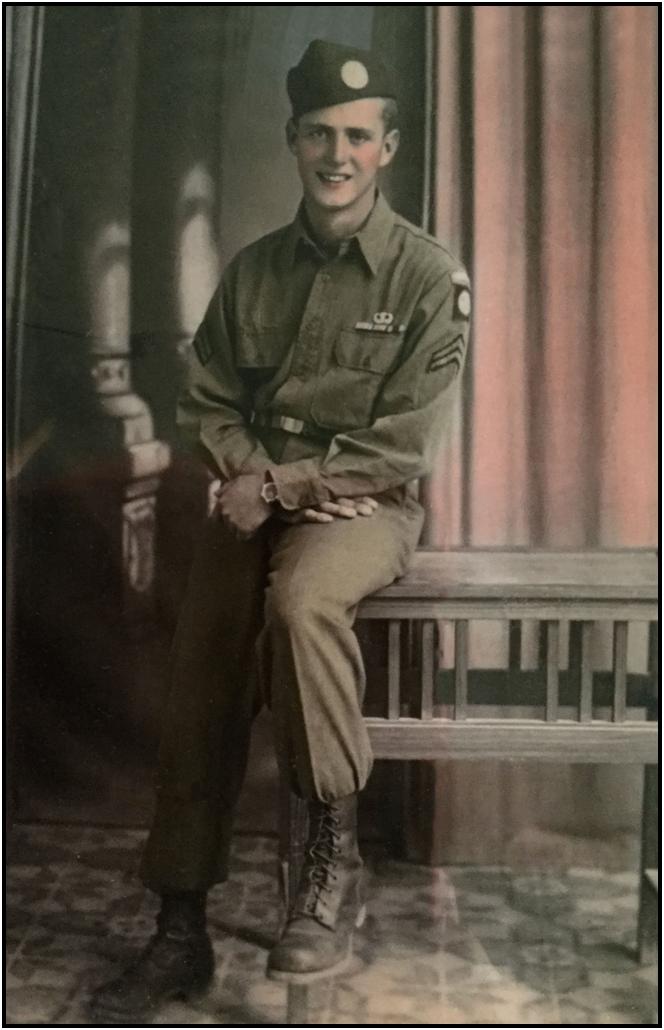
(Caption for photo below by Scott Takushi / Pioneer Press)
World War II veteran Henry Langevin salutes after raising the flag before the Minnesota Twins’ home opener at Target Field in Minneapolis on Monday, April 3, 2017. Langevin, 94, was born in St. Paul in 1922 and enlisted in the Army in 1941. He fought in the Battle of Sicily and the Battle of the Bulge. He was later sent to Germany and freed Jewish prisoners from concentration camps.
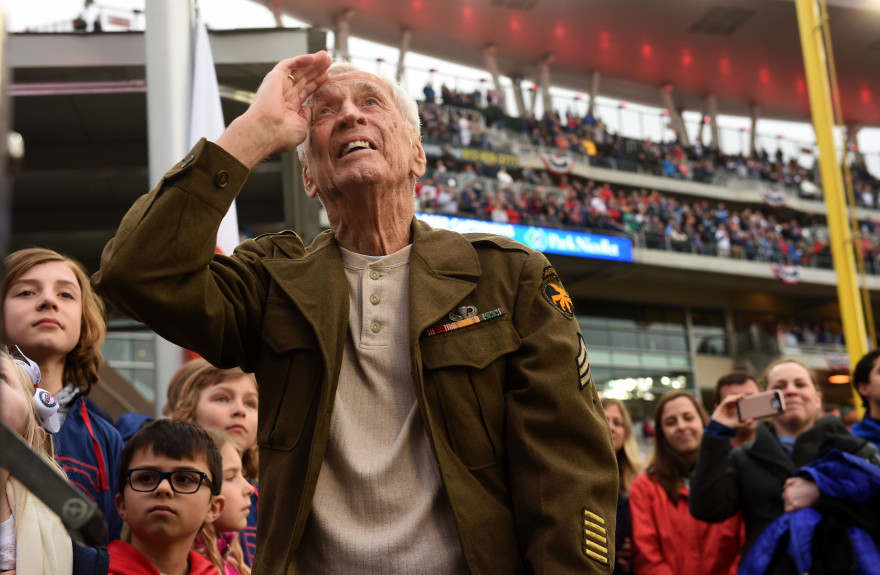
Click here for the full story.
Corporal Hank Langevin (right) and Corporal John Sporay (left).
Germany 1945.
.jpeg)
Corporal John Sporay near S...th, Germany in 1945.
.jpeg)
Tech/5 Joe Paradise of Queens, New York was killed in action on
September 18,1944. Joe and Hank were best of friends, they both
came into Holland on gliders D + 1. This photo was taken in Sicily
(1943) and recently found with Hank's WW-II memorabilia.(2018)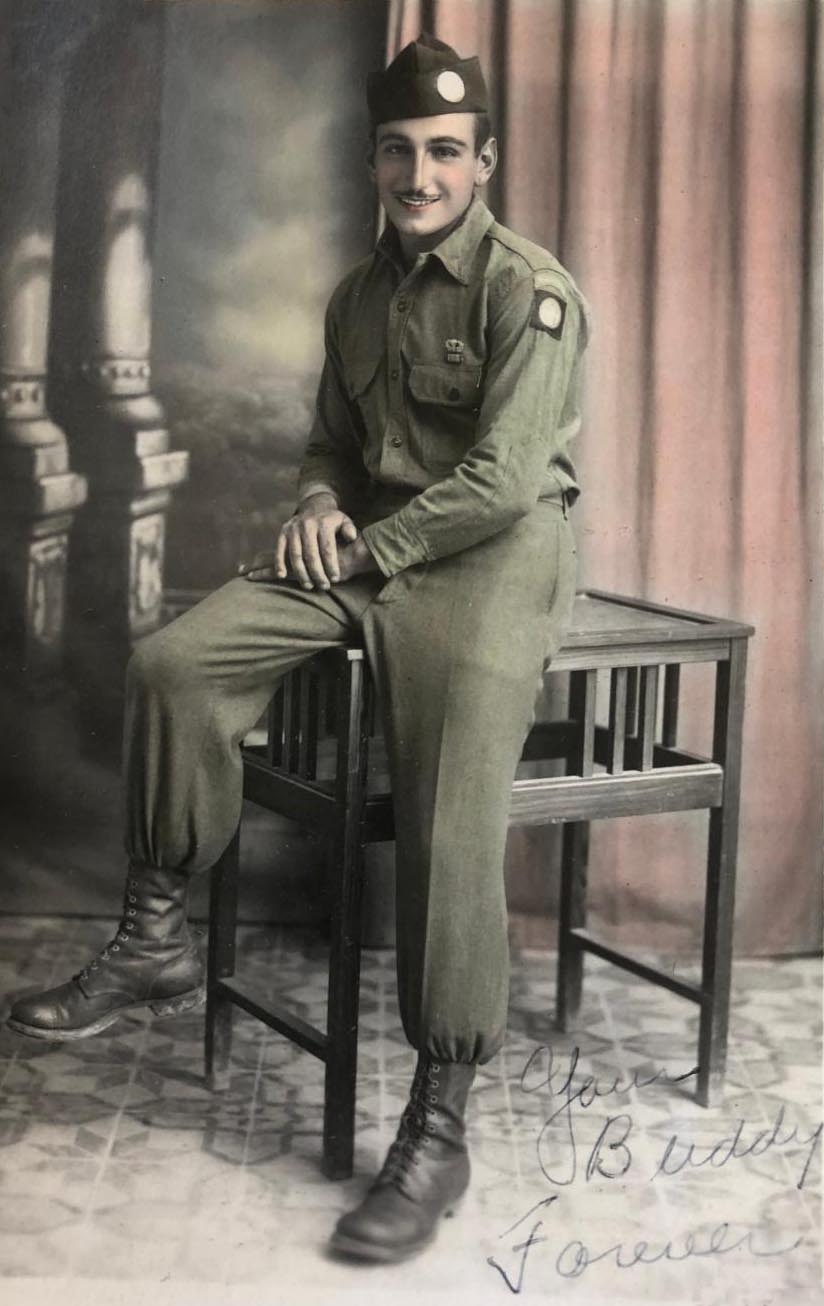
This is the back side of Joe Paradise's photo above.
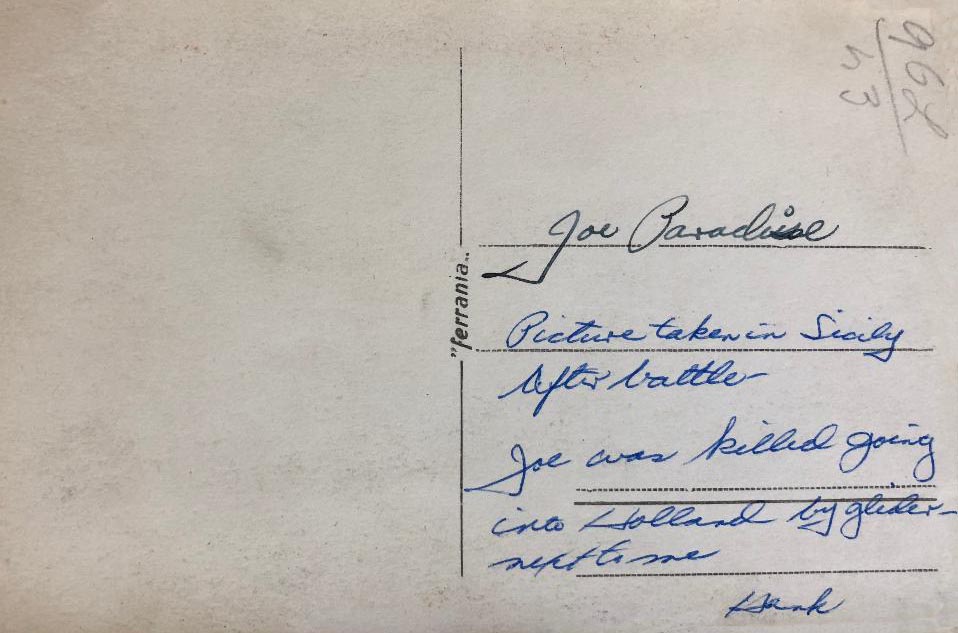
(Caption for photo below by Scott Takushi / Pioneer Press)
War II veteran Henry Langevin, 94, of Roseville gets ready to raise the flag before the Minnesota Twins’ home opener against Kansas City at Target Field in Minneapolis on Monday, April 3, 2017.
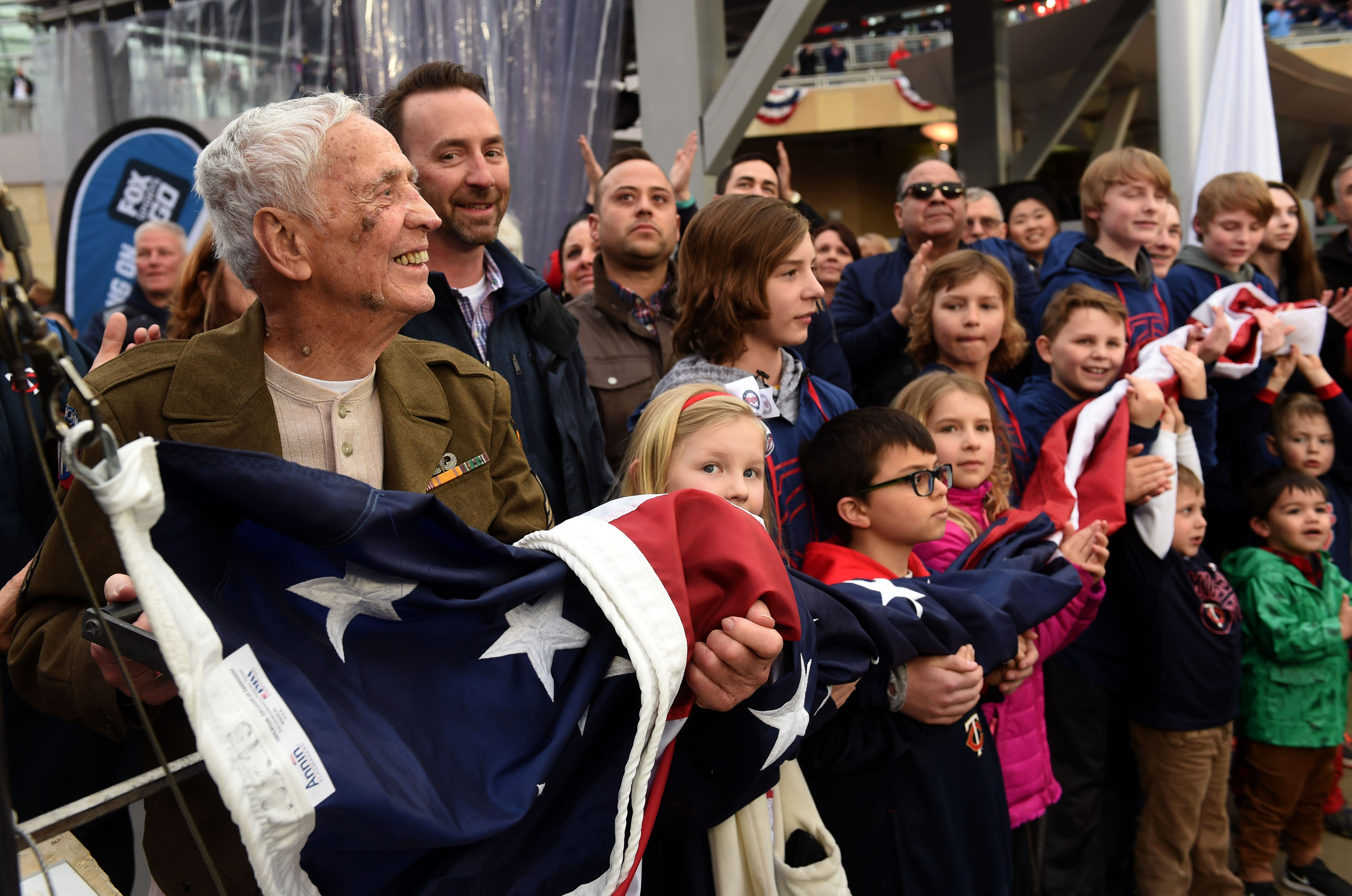 Hank's grandson Justin is to his right looking at camera. Click here to read the news article.
Hank's grandson Justin is to his right looking at camera. Click here to read the news article.
Hank mentions in his bio above that early on he served in a Coast Artillery Corps. Battery. Below is an early field unit from the 1930's. After the attack on Pearl Harbor (December 7,1941) the Army raced to protect the west coast of the United States and the island's of the Territory of Hawaii from further Japanese airplane attacks. In 1943 the Army realized that another attack was not likely and gradually these Coast Artillery Corps.units were disbanded and the soldiers in them were transferred to other Army Divisions.
This is a photo of the
96th Coast Artillery Corps,
E Battery, soon after
Pearl Harbor was attacked.
The Pfc. below served on Kauai Island, Hawaii
around the same time as Hank
was serving on the
west coast of California.
It looks like the equipment
would sight incoming airplanes
and coordinate anti-
aircraft guns with search
lights
if the attack came
during the night.

|
|